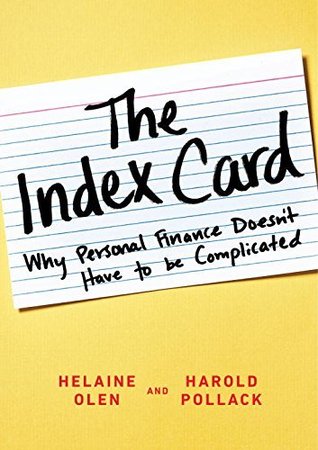More on this book
Community
Kindle Notes & Highlights
by
Helaine Olen
Read between
March 17 - March 20, 2018
Save 10 to 20 percent of your money—or as much as you can, if you can’t put that much aside. Pay your credit card balance in full every month. Invest in low-cost index funds.
Most of us don’t want to follow rules unless we know why they are rules. This book explains how the rules work and why we chose them. They may be simple, but they aren’t always self-explanatory.
In America, most of us idealize living large. Luxury is marketed at us incessantly.
Our national savings rate has been in the low single digits for twenty-five years. A little more than a quarter (27 percent) of American households have net worths of $5,000 or less. 47 percent of us report that we could not come up with $400 if we needed to without selling something, resorting to increased credit card debt, borrowing from a friend or relative, or taking out a payday loan. That’s the world we live in. It isn’t easy to step out.
How much should we save? you ask. Well, the title of this chapter pretty much says it: Ten to 20 percent of your gross income, the amount listed on your paycheck before taxes and everything else are taken out.
You need to determine what day-to-day spending is necessary and unavoidable, what is a luxury but helps you get through the day, and, finally, what is excess. Only then can you avoid falling prey to spending traps.
For three months, keep track of everything you spend money on, no matter how small.
To build your emergency fund, start stashing away three months of living expenses in an accessible savings account.
Your biggest outlays—like your house, like your car—are your biggest problems. It’s important to get these right in the long run, but these expenses are harder to control in the immediate future.
One way to cut back on spending is mind-numbingly simple but very hard to do in our society. Say good-bye to plastic and all virtual money. Studies have repeatedly demonstrated we will spend more—upward of 20 percent more—when we don’t have to handle physical, paper dollar bills.
First, know what kinds of loans you have. We can borrow money to attend college from either the federal government or private banks. It’s quite possible you have both types of loans. You should always borrow from the federal government first. Why? Federal loans offer much more flexibility than privately issued loans. There are different monthly payment plans based on income. In some cases you can defer payment if you return to school or are underwater financially. More generous options are available if you work in selected public service occupations too. The Department of Education provides an
...more
But when we invest in individual stocks, we are not engaging—no matter what we think—in prudent, reasonable investments. We are speculating.
Buy and hold a small selection of indexed mutual or exchange-traded funds for the long haul.
Moreover, renting long term comes with risks too. Rents can increase, sometimes dramatically. In many cities, including Los Angeles and San Francisco, rents have soared post-2008. If your salary does not keep up, you could eventually be priced out of a neighborhood where you’ve lived for many years and your children attend school. Currently, half of renters in the United States are paying more than the recommended 30 percent of income for their housing, leaving them on thin financial ice.
A group of economists and psychologists surveyed more than nine hundred people about their satisfaction with various life chores and choices. The activity that made them the unhappiest: their morning commute.
So what is adequate liability insurance? It’s at least twice the amount—and maybe more—of your net worth.


